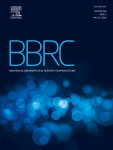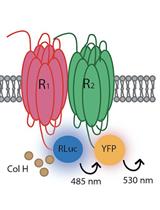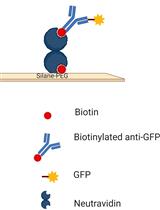- EN - English
- CN - 中文
A Method to Quantify Drosophila Behavioral Activities Induced by GABAA Agonist Muscimol
GABAA激动剂毒蝇蕈醇诱导果蝇行为活动的量化方法
发布: 2021年04月20日第11卷第8期 DOI: 10.21769/BioProtoc.3982 浏览次数: 3211
评审: Anonymous reviewer(s)
Abstract
Muscimol is a psychoactive isoxazole derived from the mushroom Amanita muscaria. As a potent GABAA receptor agonist, muscimol suppresses the activity of the central nervous system, reduces anxiety and induces sleep. We investigated the effects of muscimol on Drosophila behavior. Drosophila behavioral assays are powerful tools that are used to assess neural functions by focusing on specific changes in selected behavior, with the hypothesis that this behavioral change is due to alteration of the underlying neural function of interest. In this study, we developed a comparatively simple and cost-effective method for feeding adult flies muscimol, a pharmacologically active compound, and for quantifying the phenotypes of “resting” and “grooming+walking”. This protocol may provide researchers with a convenient method to characterize small molecule-induced behavioral output in flies.
Keywords: Drosophila (果蝇)Background
There is increasing evidence that small molecules can be used for the treatment of neuronal disorders (Rissman and Mobley, 2011). As such, knowledge of the neurobiology of small molecule-induced behavioral changes and elucidation of their underlying mechanisms will further our understanding of the functional mechanisms of neural circuits. However, most previous behavioral studies used mice or rats as a model, and a significant amount of resources is required to complete such studies. Drosophila have been used as a tractable genetic model to investigate many genetic disorders (Mackay and Anholt, 2006), and in recent years their use as a model for behavioral studies has become increasingly common (Zhukovskaya et al., 2013; Chen et al., 2014; Hampel et al., 2015; Kaur et al., 2015; Pitmon et al., 2016; Hidalgo et al., 2017).
Muscimol is a selective agonist of GABAA receptors, which are responsible for the induction of rapid inhibitory neurotransmission in mammals. Thus, the administration of muscimol causes sedative hypnotic-like effects (Lancel, 1999; Yoshimoto et al., 1999; Kumar and Kalonia, 2008; Zhang et al., 2016). In rats, intravenous injection of muscimol causes a dose-dependent decrease in motor activity, and high doses lead to cataleptic-like effects (Biggio et al., 1977).
We developed a novel approach for testing and quantifying the effects of the potent GABAA agonist muscimol on fly behaviors, including “grooming”, “walking”, and “resting” phenotypes. “Grooming” and “walking” together were considered to represent the active state of the fly, and “resting” implied no movement or a cataleptic phenotype. Direct observation of these active and non-active states of fly behavior can be achieved easily by visual observation and manual recording of the duration of individual behavioral events.
We used a 5-ml Eppendorf tube to design a basic feeding chamber, into which a glass capillary filled with a target solution was inserted. Thus, the flies were able to drink easily while traveling down the capillary drain. For the behavioral assay, a 96-well plate half-filled with 1% agar solution enabled multiple parallel samples to be run simultaneously. A standard period of 9–10 hours of starvation was utilized to induce thirst and rapid consumption of the target solution. We observed in our laboratory that the flies were generally less thirsty on rainy days, so we generally avoided performing these experiments on such days. This method enables screening of the effects of neuro-modulating peptides and natural compounds, which may act in flies through different subsets of neurons; therefore, the underlying functions of neurons may be determined. Karim MR et al. (2018) recently conducted an experiment using this method to explore the role of soy β-conglycinin-derived peptide bCGα(323-333), which regulates fly grooming behavior through effects on dopamine receptors. The significance of this approach is that it allows the study of a broad range of bioactive peptides and their neuro-modular functions with a simple and cost-effective method.
Materials and Reagents
Drosophila vial (Chemglass Life Sciences, catalog number: CGE-4789-001 )
NuncTM 96-well polystyrene round-bottom microwell plates (ThermoFisher Scientific, catalog number: 168136 )
5-ml microcentrifuge tubes (Thomas Scientific, catalog number: 1149Y05 )
Thin-walled glass capillary (Narishige, Japan, catalog number: G-100 )
Feather edge file (Hardwick & Sons, catalog number: HWXH952X )
Thin wall needle 18G × 1 1/2" (Terumo, catalog number: NN-1838R )
Ultra-thin wall needle 22G × 1 1/2" (Terumo, catalog number: NN-2238R )
Transparent plastic sheet.
Muscimol (Sigma-Aldrich, catalog number: M1523 )
Drosophila melanogaster (Canton-S strain). Flies were purchased from the “Kyoto Stock Center”
Formula 4-24® Instant Drosophila Medium (Caroline Biological Supply Company, catalog number: 173120 )
Drosophila Yeast Active (SciMart, catalog number: DR-840-25LB )
Agarose ME (Wako, catalog number: 010-13975 )
Brilliant Blue FCF (TCI, catalog number: B0790 )
100 mM muscimol solution (see Recipes)
1 mg/ml Brilliant Blue FCF (see Recipes)
5 mM/2.5 mM/1 mM muscimol solution (see Recipes)
1% agarose solution (see Recipes)
Equipment
Olympus SZ40 microscope
Tripod Stands (Science Equip, catalog number: TSR13.00.1541 )
iPad mini (Apple)
Incubator
Software
Excel 2013 (Microsoft)
Free Stopwatch Software
Procedure
文章信息
版权信息
© 2021 The Authors; exclusive licensee Bio-protocol LLC.
如何引用
Karim, M. R. (2021). A Method to Quantify Drosophila Behavioral Activities Induced by GABAA Agonist Muscimol. Bio-protocol 11(8): e3982. DOI: 10.21769/BioProtoc.3982.
分类
神经科学 > 基础技术 > 受体-受体互作
您对这篇实验方法有问题吗?
在此处发布您的问题,我们将邀请本文作者来回答。同时,我们会将您的问题发布到Bio-protocol Exchange,以便寻求社区成员的帮助。
Share
Bluesky
X
Copy link











